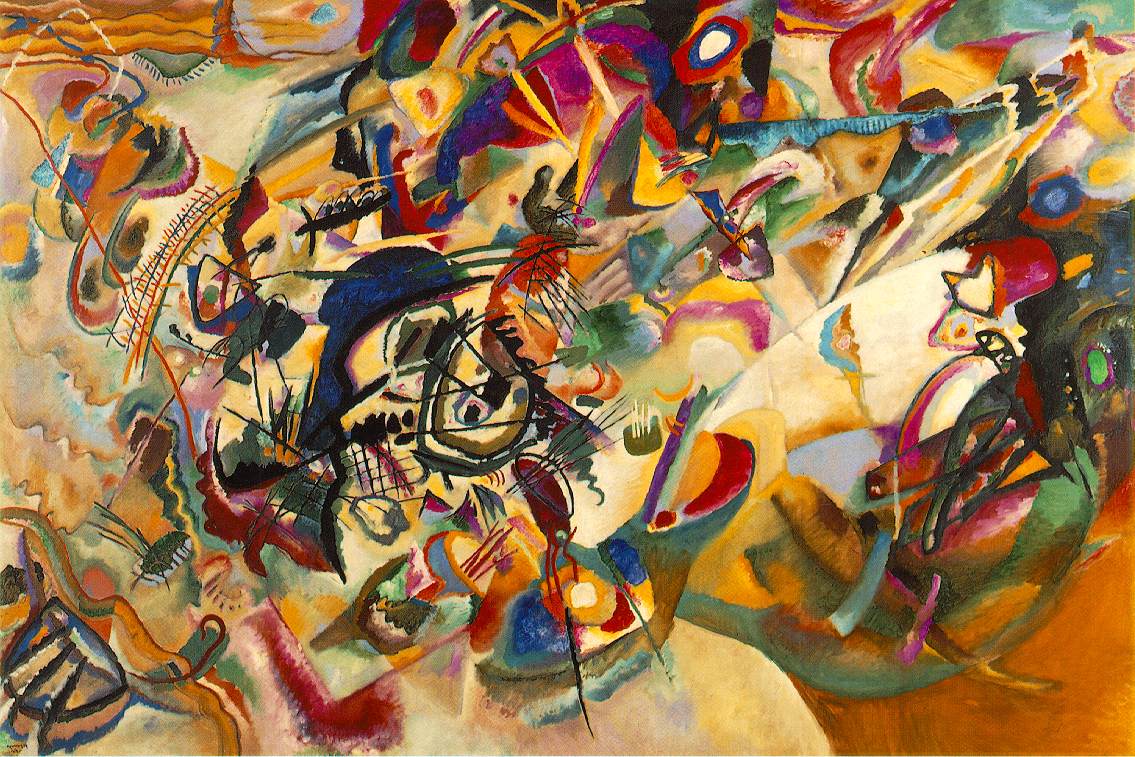Ah music--to artists 150 years ago, music was synonymous with freedom. It was their ticket out of representationalism and into the hitherto unexplored realms of abstraction.
 This James Abbot McNeil Whistler's Symphony in White No. 1: The White Girl from 1861-62.
This James Abbot McNeil Whistler's Symphony in White No. 1: The White Girl from 1861-62.The title is taken from music, and so is the apparent lack of subject matter. Sure, there's a girl there, but she is white, white dress, white background and forgound, white, white, white. It isn't about her. It's about the color. Whistler would get far more abstract than this, but even his most daring Falling Rocket is only a partial abstraction.
So time goes by and things change. About fifty years after Whistler's image, Wassily Kandinsky took music as the ideal for the visual arts. He theorized and wrote about the confluence of music and color and painting, and started naming his paintings the way musicians name their compositions: improvisation, composition, contrasting sounds, etc. By the time we get to Kandinsky Modernism is in full swing. Cubism has already evolved through its first two phases, and the influence of academic "correct" painting had fallen considerably.
 This is one of his 1913 compositions (number seven for those of you who care. And incidentally, the numbering thing also derives from music (think of all the numbered classical compositions out there). Kandinsky was able to take the influence of music further than Whistler ever had. Music is a far more overt inspiration and starting point for these later works.
This is one of his 1913 compositions (number seven for those of you who care. And incidentally, the numbering thing also derives from music (think of all the numbered classical compositions out there). Kandinsky was able to take the influence of music further than Whistler ever had. Music is a far more overt inspiration and starting point for these later works.Once again, time goes by and things change. Another fifty years pass. 100 years after Whistler's Symphony in White, Clement Greenberg wrote:
". . . the unique and proper area of competence of each art coincided with all that was unique to the nature of its medium. The task of self-criticism became to eliminate from the effects of each art any and every effect that might conceivably be borrowed from or by the medium of any other art. Thereby each art would be rendered 'pure' and in its 'purity' find the guarantee of its standards of quality as well as of its independence."
In other words, painting should not try to imitate music, and sculpture should not try to imitate literature, and music and literature should not try to imitate painting or sculpture. This was Greenberg's attempt to put some rules into an art world that, already in 1960, was all wrong.

1 comment:
I think the most confusing art movement is by far Dadaism. I'm still not sure what it was all about. I think that art has to be inspired from something and music or literature can often provoke the best concepts for art. It is odd how music in particular can have different effects on people. I went to the jury for the most recent
Graphic Design graduates and a few of them presented a CD project they had done. It was really interesting how different everyone's projects turned out even though they listened to the same band.
Post a Comment